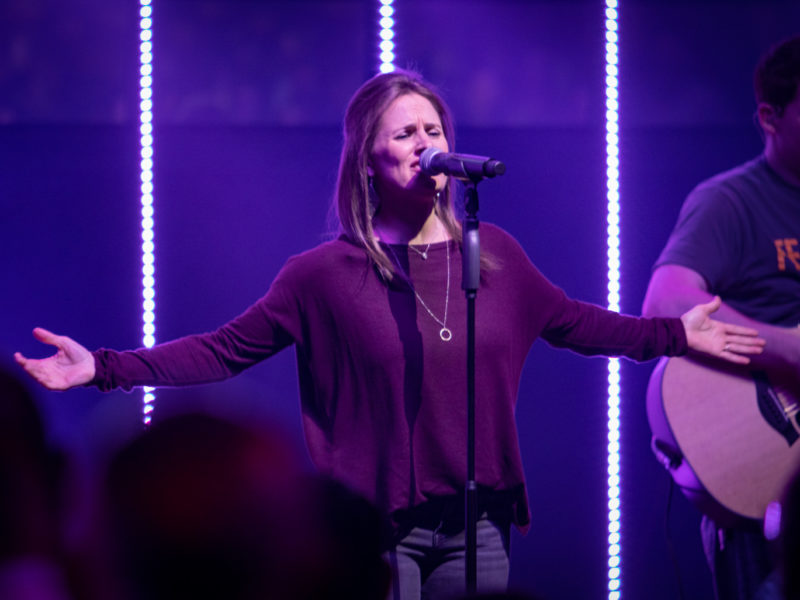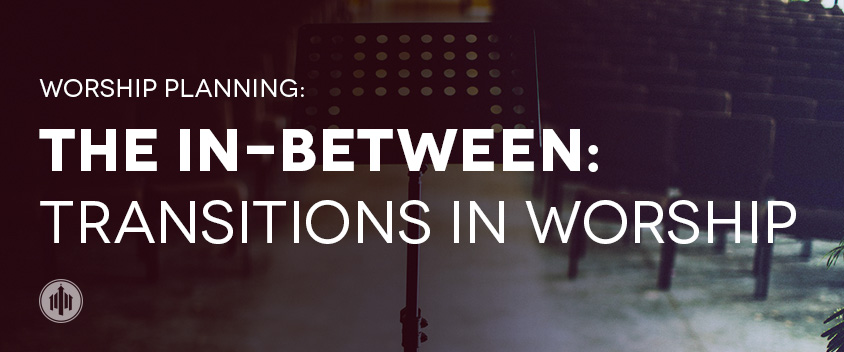As a worship leader, leading within a song is a given… But what about the in-between?
Transitions are a great way to help create a seamless time of worship and reduce potential awkwardness between songs. The truth is that we practice and plan so much when it comes to our songs that we sometimes neglect how to connect them. Playing all the songs in the same key isn’t always enough to create a smooth flow. So here are some useful techniques I’ve learned over the years through both the easy way (learning from others) and the hard way (learning from your own mistakes):
1) New Intros – Not all songs have to have a concrete finish in order for the next song start. Feel free to use the band creatively and maybe even write up fresh new segues/intros to connect songs. For example, a song that normally starts abruptly with a loud intro can be redone by easing in with a guitar line that imitates the melody line. Use the music! You could fade in some pads (cue the guitarists or keyboardist for some verby swells), chord progressions from the previous chorus or bridge, or maybe sing one last chorus repeat if the Spirit leads. Even loops are a great lead-in and can also carry much of the burden of “how to start the next song.”
2) Talking – It’s good to engage with people in the middle of the set! Welcome them, talk to them, lead them. It’s also a great way to introduce the next song (maybe it’s a new one). At my church I try to do this with vocabulary that isn’t so “Christianese” so that newcomers or nonbelievers can feel more comfortable. Try sharing between songs something God revealed to you regarding the next/previous song, scripture that inspired the songwriter(s), or even a funny story that can put things into perspective. But it’s important to do this as simple and seldom as possible… After all, we’re using these transitions to help make our worship smoother, not interrupt it. So I like to talk once before everything begins, or before a fast song to help get the congregation ready! This can even be a quick invitation, especially if the click/loop for the next song’s already started. And if you’re worried about uncomfortable silence during your spiel, you could have a go-to chord progression so that the band lightly supports in the background.
3) Prayer – Sometimes premeditated, sometimes not. I try to treat prayer during worship much like the talking. Because people worship in different ways, I’m always receptive to how the congregation responds during these times. This will depend on your church but I try to keep them at a minimum. Try incorporating key lines or ideas from the songs that sandwich your prayer, or invite the church to pray and reflect upon what was just sung (in case they have yet to hop on board for what’s already going on). I believe it’s important to intertwine prayer with our praise. It keeps our head in the game while our heart pours out to God.
In the end, short and simple is best. Anything too lengthy and you might lose people by creating a distraction from God rather than an attraction towards Him. As worship leaders we want to build a comfortable environment where we do what we have to do, not what we want to do, so that our church can easily follow along, paying attention to us briefly, only to quickly forget about us and go back to deflecting all glory to God!
BONUS
4) Encourage – Don’t be afraid to encourage the congregation! Might seem weird at first, but for that one person who’s too afraid to sing out, it just might be the nudge they needed to give their all to Jesus this Sunday! Even a simple “You guys sound great this morning! Let’s continue to lift our voices to the Lord today with this chorus.” can really do the trick!
5) Silence – Many worship leaders may dread this because it seems like a mistake… But it’s not! Just being still for a moment can actually help your congregation connect with God. Remember that when Elijah was waiting to hear from the Lord, it wasn’t through the powerful wind, the earthquake, or the fire, but in the end through a whisper (1 Kings 19:11-13). Everything mentioned above is great and may help your church to worship smoothly, without a hitch, but once in a while it just pays to be quiet. This means no whispering to the bassist, no noodling on your guitar (yes, we see your volume pedal is down but your electric guitar still makes noise), and no laughing amongst yourself! Bask in God’s presence… Again, short & simple is key here. And silence also doesn’t mean “look to your bandmates and figure out what to do next”. If the silence wasn’t planned, always be on the same page as your team. More on that some other time (planning spontaneity)!
Until next time! Transitioning out…




Thanks for thinking this through Andy! It’s such a huge part of our worship planning that can easily be ignored.
Absolutely! It’s always nice to lay out our options so that we can be flexible and prepared during our times of worship.
If you’re already doing this, you probably don’t even realize you are until you worship somewhere else and have odd starting and stopping between each song. We have our team come up during prayer, any thoughts on whether that’s disrespectful or not?
Certainly an eye-opener when you worship elsewhere – Everybody worships and leads worship differently. I would discuss that with your other church leaders to see where they stand, prayerfully considering the flow of the service and where your church is at.
This is a great encouragement and useful tool for young leaders. Thank you so much!!
Thanks for the kind words Brytany!
Beautiful !!
Thank you Andy! God Bless you!